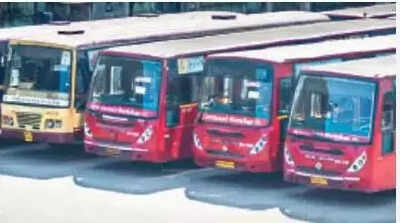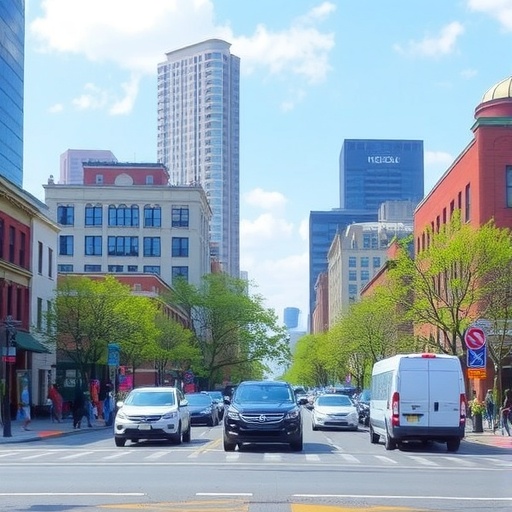Hanoi Set to Transform Its Future with Groundbreaking Urban Railway Projects in 2025 – Travel And Tour World

Report on Hanoi’s Urban Railway Expansion and Alignment with Sustainable Development Goals
The city of Hanoi is set to initiate a significant infrastructure development phase with an investment of approximately $4.66 billion in two new urban railway projects commencing in 2025. This initiative is designed to address critical urban mobility challenges, primarily severe traffic congestion, and strategically aligns with multiple United Nations Sustainable Development Goals (SDGs).
Project Details and Timeline
The expansion of Hanoi’s public transport network involves the construction of two new metro lines, adding to the existing Cat Linh-Ha Dong and Nhon-Hanoi Station lines.
Metro Line No. 2: Nam Thang Long – Tran Hung Dao
- Route: This line will connect the Nam Thang Long urban area with Tran Hung Dao in the city center.
- Objective: To reduce traffic pressure on major radial roads and improve commuter access through core urban districts.
- Timeline: Construction is scheduled to begin in Autumn 2025, with a projected operational date of October 10, 2025.
Metro Line No. 5: Van Cao – Hoa Lac
- Route: This line will establish a crucial link between Van Cao and the Hoa Lac high-tech park.
- Objective: To alleviate chronic congestion at the western gateway of Hanoi and enhance connectivity between the central capital and its rapidly developing outskirts.
- Timeline: The line is scheduled to commence service on December 19, 2025.
Strategic Importance and Contribution to Sustainable Development Goals (SDGs)
These infrastructure projects are fundamental to Hanoi’s long-term sustainable development strategy, providing a modern solution to urban challenges and contributing directly to the following SDGs:
- SDG 11: Sustainable Cities and Communities: The primary goal is to advance Target 11.2 by providing safe, affordable, accessible, and sustainable transport systems. By offering an efficient alternative to private vehicles, the metro expansion will reduce congestion, improve air quality, and make the city more inclusive and resilient.
- SDG 9: Industry, Innovation, and Infrastructure: The investment represents a major step towards developing quality, reliable, and resilient infrastructure (Target 9.1). This modernization of the transport system is essential for supporting economic growth and improving the quality of life for all citizens.
- SDG 13: Climate Action: By promoting a shift from road transport to electric-powered rail, the projects will substantially decrease the city’s carbon footprint and greenhouse gas emissions, contributing directly to climate change mitigation efforts.
- SDG 3: Good Health and Well-being: Reduced traffic congestion and vehicle emissions will lead to improved air quality and lower noise pollution, positively impacting the physical and mental well-being of Hanoi’s residents.
- SDG 8: Decent Work and Economic Growth: The construction and operation phases will create numerous employment opportunities. Furthermore, an efficient transport network enhances economic productivity by reducing travel times and improving access to commercial centers.
Future Outlook and Long-Term Vision
The development of Metro Lines No. 2 and No. 5 marks the beginning of a more extensive public transportation plan for the capital.
- Master Plan: Hanoi’s government has outlined a comprehensive national transport development plan that envisions a total of 14 urban railway lines by 2050.
- Sustainable Future: The long-term vision is to create an integrated, efficient, and sustainable public transportation system that can accommodate the needs of a growing population and establish Hanoi as a modern, world-class city.
Analysis of Sustainable Development Goals in the Article
-
Which SDGs are addressed or connected to the issues highlighted in the article?
The article on Hanoi’s urban railway projects connects to several Sustainable Development Goals (SDGs) by focusing on infrastructure development, urban sustainability, and public well-being.
-
SDG 9: Industry, Innovation and Infrastructure
This goal is central to the article, which details a massive investment in public transport infrastructure. The construction of two new metro lines is a direct effort to “build resilient infrastructure, promote inclusive and sustainable industrialization and foster innovation.” The article highlights the project as a “$4.66 billion” investment to “improve transport infrastructure.”
-
SDG 11: Sustainable Cities and Communities
The primary motivation for the railway projects is to make Hanoi a more sustainable city. The article explicitly states the projects are a “longer-term solution to the city’s traffic shitfest and the quality of life of its occupants.” This aligns with the goal of making cities and human settlements inclusive, safe, resilient, and sustainable. The projects aim to reduce traffic congestion, improve air quality, and provide accessible public transport, all of which are key components of SDG 11.
-
SDG 3: Good Health and Well-being
While not the main focus, the article implies a connection to public health. By aiming to “reduce pollution” and offer an “environmentally friendly alternative to clogged roadways,” the project contributes to better air quality. The text mentions that the new lines will “spare them the dust and dirt on the city’s streets,” which directly relates to reducing exposure to pollutants and improving the well-being of citizens.
-
-
What specific targets under those SDGs can be identified based on the article’s content?
The article’s content points to several specific targets within the identified SDGs.
-
SDG 9: Industry, Innovation and Infrastructure
- Target 9.1: “Develop quality, reliable, sustainable and resilient infrastructure…to support economic development and human well-being, with a focus on affordable and equitable access for all.” The article describes the new metro lines as a “major step in addressing its notorious traffic issues” and a way to “make everyone’s lives easier,” which directly supports this target by developing sustainable transport infrastructure.
-
SDG 11: Sustainable Cities and Communities
- Target 11.2: “By 2030, provide access to safe, affordable, accessible and sustainable transport systems for all, improving road safety, notably by expanding public transport…” The entire article is about expanding public transport through the construction of Metro Lines No. 2 and No. 5. The goal is to offer a “faster and more convenient travel” option and “enhance public transport.”
- Target 11.6: “By 2030, reduce the adverse per capita environmental impact of cities, including by paying special attention to air quality…” The article states that a key benefit of the metro system will be to “reduce pollution” and provide an “environmentally friendly alternative,” directly addressing this target.
- Target 11.a: “Support positive economic, social and environmental links between urban, peri-urban and rural areas…” The article mentions that Metro Line 5 will “service the city’s western corridor” and “help ease the pressure on people traveling from crowded center of the capital to its outskirts,” thereby strengthening connections between different parts of the urban region.
-
SDG 3: Good Health and Well-being
- Target 3.9: “By 2030, substantially reduce the number of deaths and illnesses from hazardous chemicals and air, water and soil pollution and contamination.” The project’s aim to “reduce pollution” and spare commuters from “the dust and dirt on the city’s streets” directly contributes to reducing illnesses caused by air pollution from heavy traffic.
-
-
Are there any indicators mentioned or implied in the article that can be used to measure progress towards the identified targets?
Yes, the article provides several quantitative and qualitative indicators that can be used to measure progress.
- Total Investment in Infrastructure: The article specifies a budget of “$4.66 billion on two urban railway projects,” which is a direct indicator for investment in sustainable infrastructure (Target 9.1).
- Number of New Transport Lines: The article mentions the construction of “two new metro lines” starting in 2025 and a long-term plan for “14 urban railway lines by 2050.” This is a clear indicator of the expansion of public transport (Target 11.2).
- Reduction in Travel Time: A specific, measurable outcome is provided: a trip from the Old Quarter to the airport will be reduced from “the current hour ride” to a “15 minute ride.” This indicates improved efficiency of the transport system (Target 11.2).
- Reduction in Air Pollution: The article implies this as a key outcome. Progress can be measured by monitoring air quality levels in the city, based on the project’s goal to “reduce pollution” and be an “environmentally friendly alternative” (Targets 11.6 and 3.9).
-
Table of SDGs, Targets, and Indicators
SDGs Targets Indicators SDG 9: Industry, Innovation and Infrastructure 9.1: Develop quality, reliable, sustainable and resilient infrastructure. - Total investment in projects ($4.66 billion).
- Number of new railway lines constructed (2 in 2025, 14 by 2050).
SDG 11: Sustainable Cities and Communities 11.2: Provide access to safe, affordable, accessible and sustainable transport systems for all by expanding public transport. 11.6: Reduce the adverse per capita environmental impact of cities, paying special attention to air quality.
11.a: Support positive links between urban and peri-urban areas.
- Reduction in travel time (e.g., from 1 hour to 15 minutes for a specific route).
- Expansion of public transport network coverage (e.g., Metro Line 5 servicing the western corridor).
- Implied reduction in air pollution levels.
SDG 3: Good Health and Well-being 3.9: Substantially reduce the number of deaths and illnesses from air pollution and contamination. - Implied reduction in air pollution from traffic (“reduce pollution,” “spare them the dust and dirt”).
Source: travelandtourworld.com

What is Your Reaction?
 Like
0
Like
0
 Dislike
0
Dislike
0
 Love
0
Love
0
 Funny
0
Funny
0
 Angry
0
Angry
0
 Sad
0
Sad
0
 Wow
0
Wow
0












































































